
An Interview with Iranian-Canadian artist Mehrdad Shoghi Painting the Power of Kufic
Sep 27, 2012 Interview

Mehrdad Shoghi is an artist based in Toronto, Canada. Born and raised in Tehran, he received a thorough classical training in Persian calligraphy and painting as well as in graphic design in Iran. Having exhibited in Europe, North America and the Middle East, Shoghi has also received several private and public commissions, from calligraphic murals in the Tehran metro to architectural tilework for Oman’s Sultan Qaboos bin Said al Said’s palace, the Bait al Baraka. It was, however, Bonham’s auction in Dubai in 2008, “Modern and Contemporary Arab, Iranian, Indian and Pakistani Artâ€, that truly internationalized his career. IAM caught up with Soghi to discuss his recent exhibit and work.
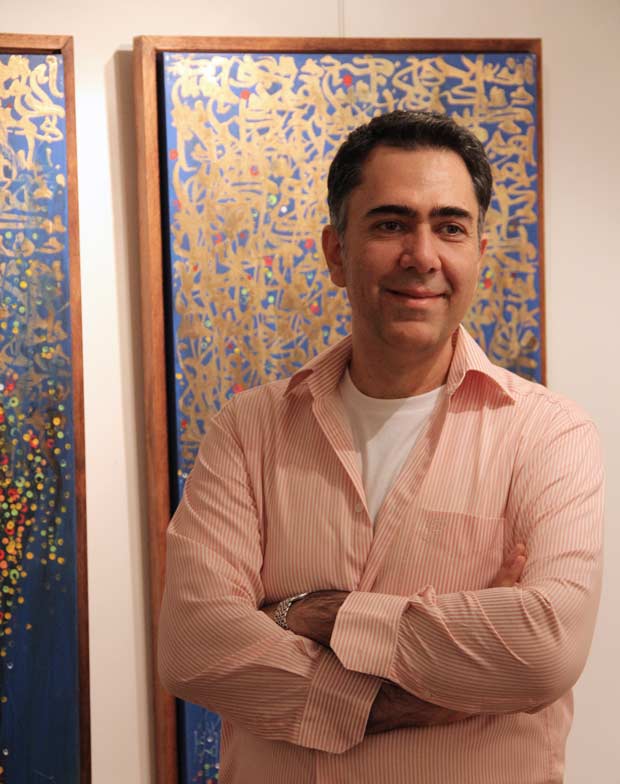
Thank you very much, it is my pleasure to exhibit at MEKIC gallery.
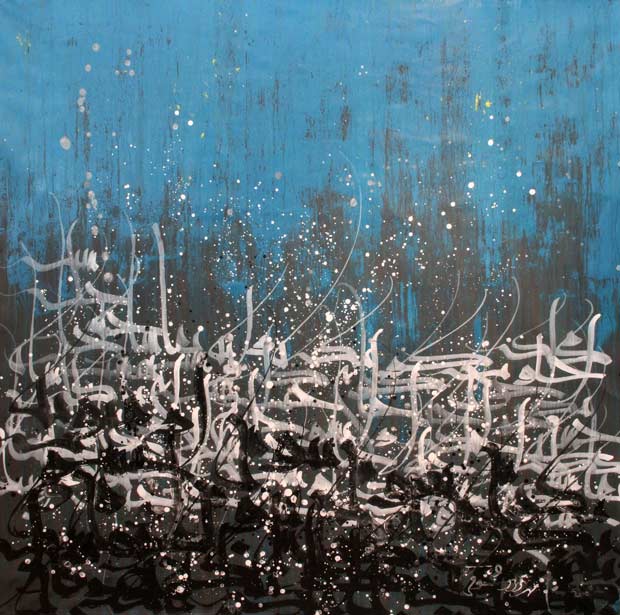 002 by Mehrdad Shoghi, 145x140 cm, canvas / Courtesy of the Artist
002 by Mehrdad Shoghi, 145x140 cm, canvas / Courtesy of the Artist
Traditional training has helped me to get to the roots of art in the Middle East, especially in my home country of Iran and it gave me the chance to understand the spirit of Persian art. On the other hand, university education helped me to upgrade my perspective and to see art from a broader angle. So merging these two trainings allowed me to develop my own style in calligraphy.
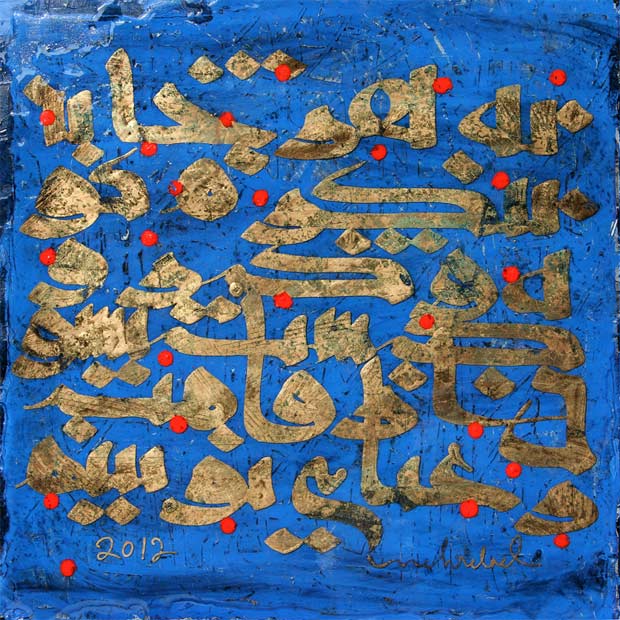 007 by Mehrdad Shoghi, Mixed media on MDF, 61x61cm / Courtesy of the Artist
007 by Mehrdad Shoghi, Mixed media on MDF, 61x61cm / Courtesy of the Artist
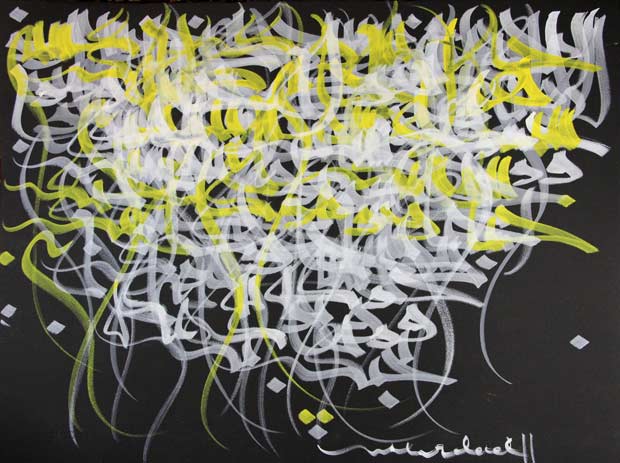 010 by Mehrdad Shoghi, Acrylic on paper, 76x56 cm, / Courtesy of the Artist
010 by Mehrdad Shoghi, Acrylic on paper, 76x56 cm, / Courtesy of the Artist
I was 14 when for the first time I saw someone write a piece of Persian calligraphy in person. It fascinated me from that moment on and I knew that this was what I wanted to do. It was like a turning point in my life. So I started learning Nasta‘liq which is a traditional Persian script developed in the 14th century as well as related arts such as illumination, restoration and miniature painting for the next five years. Another turning point for me was when I came across a Kufic manuscript from the 8 or 9th century, a Qur’an on vellum. I had been commissioned to restore it and it stayed with me some time while I was working on it. It was of course in Arabic. As you may know Persian and Arabic use the same alphabet, but the language is totally different, so I had no idea of the meaning of the words, but the visual aspect of the words touched me very deeply. I realized that Kufic, which is the root of all seven formal Persian and Arabic scripts, is extremely rich in its visual dimension. From that point on, I started to explore its potential and it helped me realize that the meaning of the word itself is not my primary focus and interest. What I wanted to explore more was the visual aspects of the letters. The Mehr script which I developed years later is a combinatiom of Persian calligraphy forms and Kufic script; in other words it is the persianized and modernized version of the Kufic.
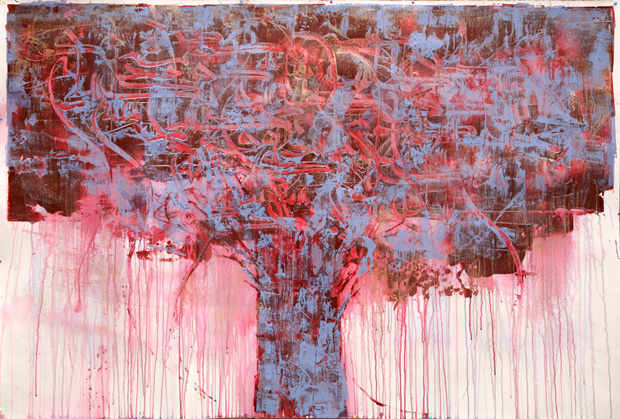 025 by Mehrdad Shoghi, Acrylic on paper, 180x120cm / Courtesy of the Artist
025 by Mehrdad Shoghi, Acrylic on paper, 180x120cm / Courtesy of the Artist
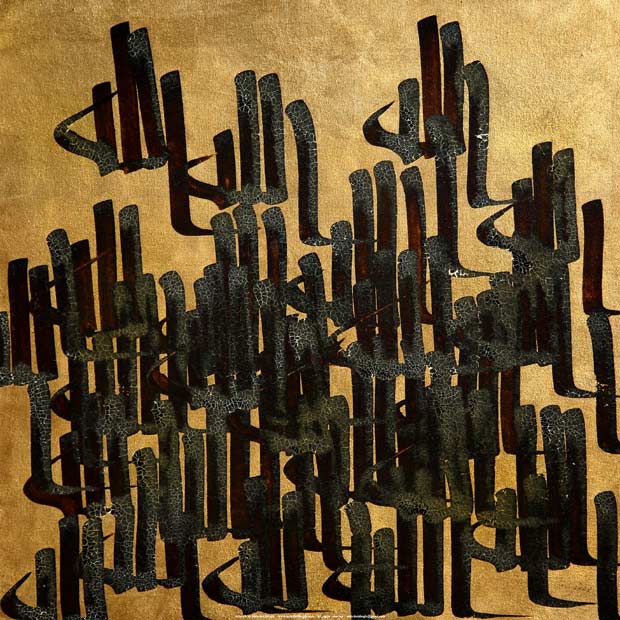 Untitled by Mehrdad Shoghi, Ink and gold leaf on canvas, 70x70 cm / Courtesy of the Artist
Untitled by Mehrdad Shoghi, Ink and gold leaf on canvas, 70x70 cm / Courtesy of the Artist
My work usually starts from the joy and excitement of perceiving the essence of a spiritual poem or verse. This state of joy makes me like an instrument through which the artworks is being created. I am more like a witness enjoying the process and, of course, I enjoy the act of writing very much.
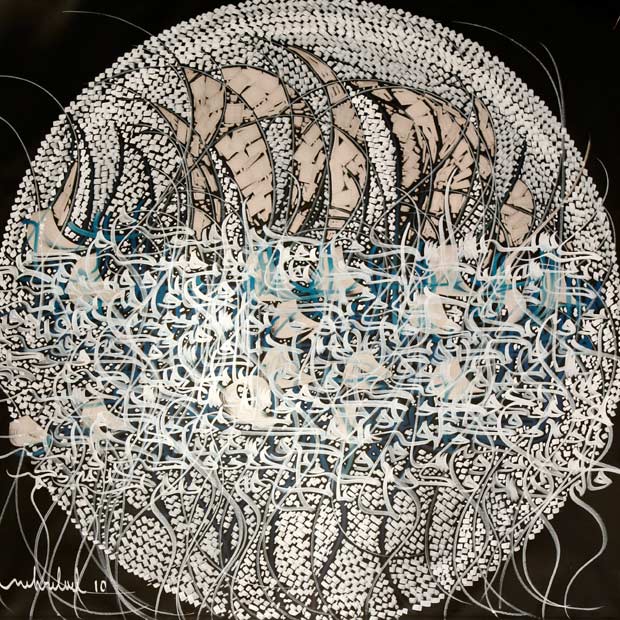 018 by Mehrdad Shoghi, Acrylic on canvas, 147x147 cm / Courtesy of the Artist
018 by Mehrdad Shoghi, Acrylic on canvas, 147x147 cm / Courtesy of the Artist
I would say neither. My artworks are closer to abstract painting than to the use traditional elements characteristic of saqqakhaneh or hurufiyya.
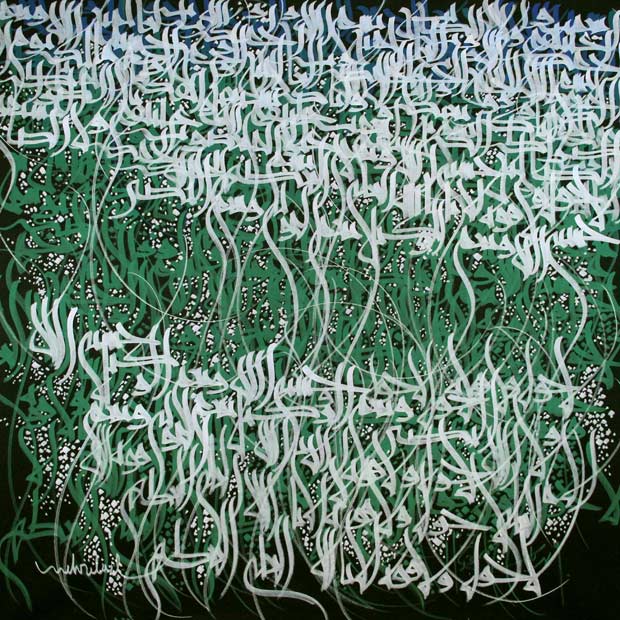 032 by Mehrdad Shoghi, Acrylic on canvas, 145x145 cm / Courtesy of the Artist
032 by Mehrdad Shoghi, Acrylic on canvas, 145x145 cm / Courtesy of the Artist
For me, the beauty of the Kufic script lies in the simple, solid, towering and static forms of its letters. The development of Mehr was the result of my new or modern approach to this ancient, strong and beautiful script coupled with my background in Persian calligraphy.
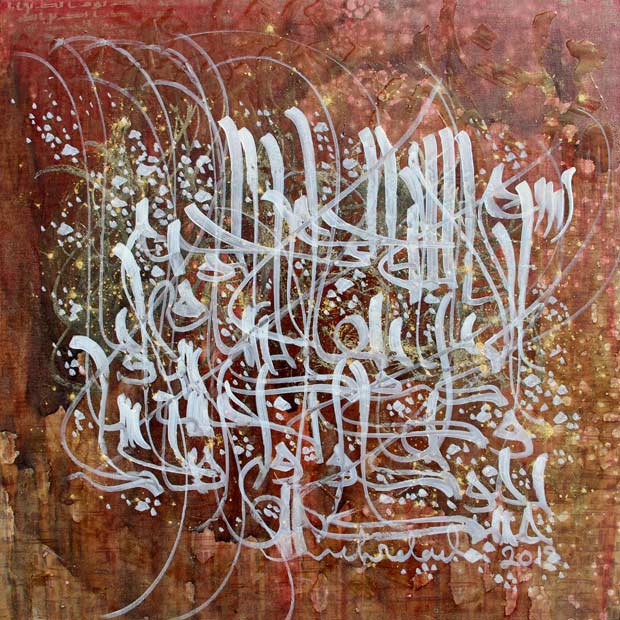 013 by Mehrdad Shoghi, Mixed media on canvas, 76x76 cm / Courtesy of the Artist
013 by Mehrdad Shoghi, Mixed media on canvas, 76x76 cm / Courtesy of the Artist
The elements, as you put it, happen intuitively in my paintings, but they are the result of my very fascination with an idea or my state of mind at the time. Like when I was creating The Empty Spaces series, I was really intrigued with quantum physics and the very idea that the universe, even at the subatomic level, is majorly comprised of empty space. This idea led me to see human figures as an empty space surrounded by an even bigger emptiness around. The subjects, seemingly floating in an empty space, are surrounded by Persian poems of love and devotion.
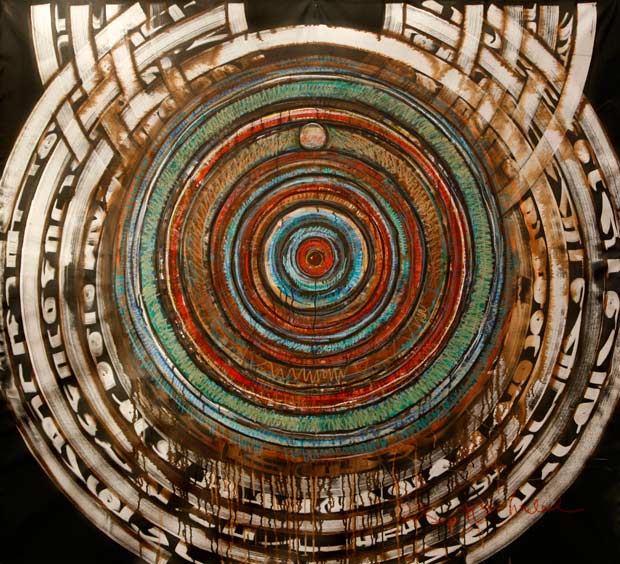 027 by Mehrdad Shoghi, Acrylic on canvas, 150x120cm / Courtesy of the Artist
027 by Mehrdad Shoghi, Acrylic on canvas, 150x120cm / Courtesy of the Artist
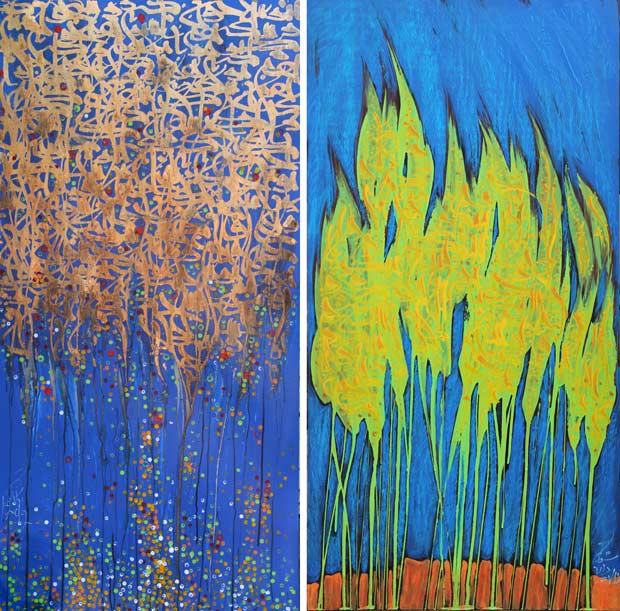 Left: 014, Mixed media on canvas, 62x122 cm / Right: 023, Mixed media on plywood, 62x122 cm / Courtesy of the Artist
Left: 014, Mixed media on canvas, 62x122 cm / Right: 023, Mixed media on plywood, 62x122 cm / Courtesy of the Artist
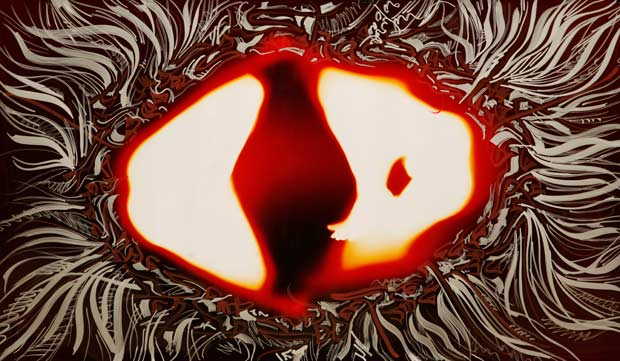 The Empty Spaces series_008, Acrylic and Light on Metalic Photography paper, 240x120 cm / Courtesy of the Artist
The Empty Spaces series_008, Acrylic and Light on Metalic Photography paper, 240x120 cm / Courtesy of the Artist
I believe that the true meaning of things is far beyond words and forms and thus we can just point to it. I am not using infinite pattern or voids like in ancient Islamic art to point to a meaning consciously. But my respect and admiration for the masters of ancient Islamic art and the impact it had on me through working and researching Islamic art over the last two decades sometimes shows itself in my paintings.
 035 by Mehrdad Shoghi, Acrylic on canvas, 76x76 cm / Courtesy of the Artist
035 by Mehrdad Shoghi, Acrylic on canvas, 76x76 cm / Courtesy of the Artist
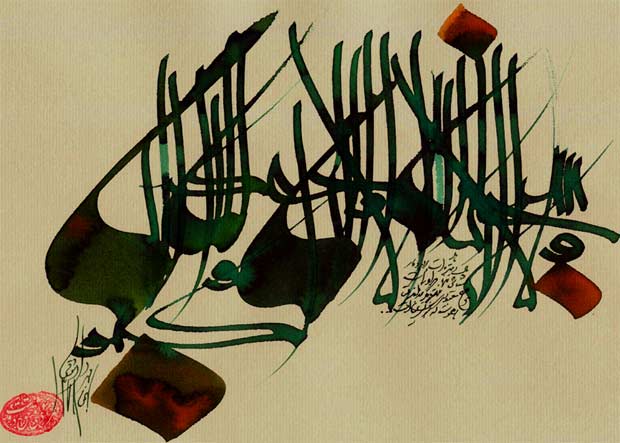 Untitled by Mehrdad Shoghi, Ink on paper, 30x24 cm / Courtesy of the Artist
Untitled by Mehrdad Shoghi, Ink on paper, 30x24 cm / Courtesy of the Artist
You’re more than welcome. Thank you very much for your thoughtful questions.
Comments
Add a comment